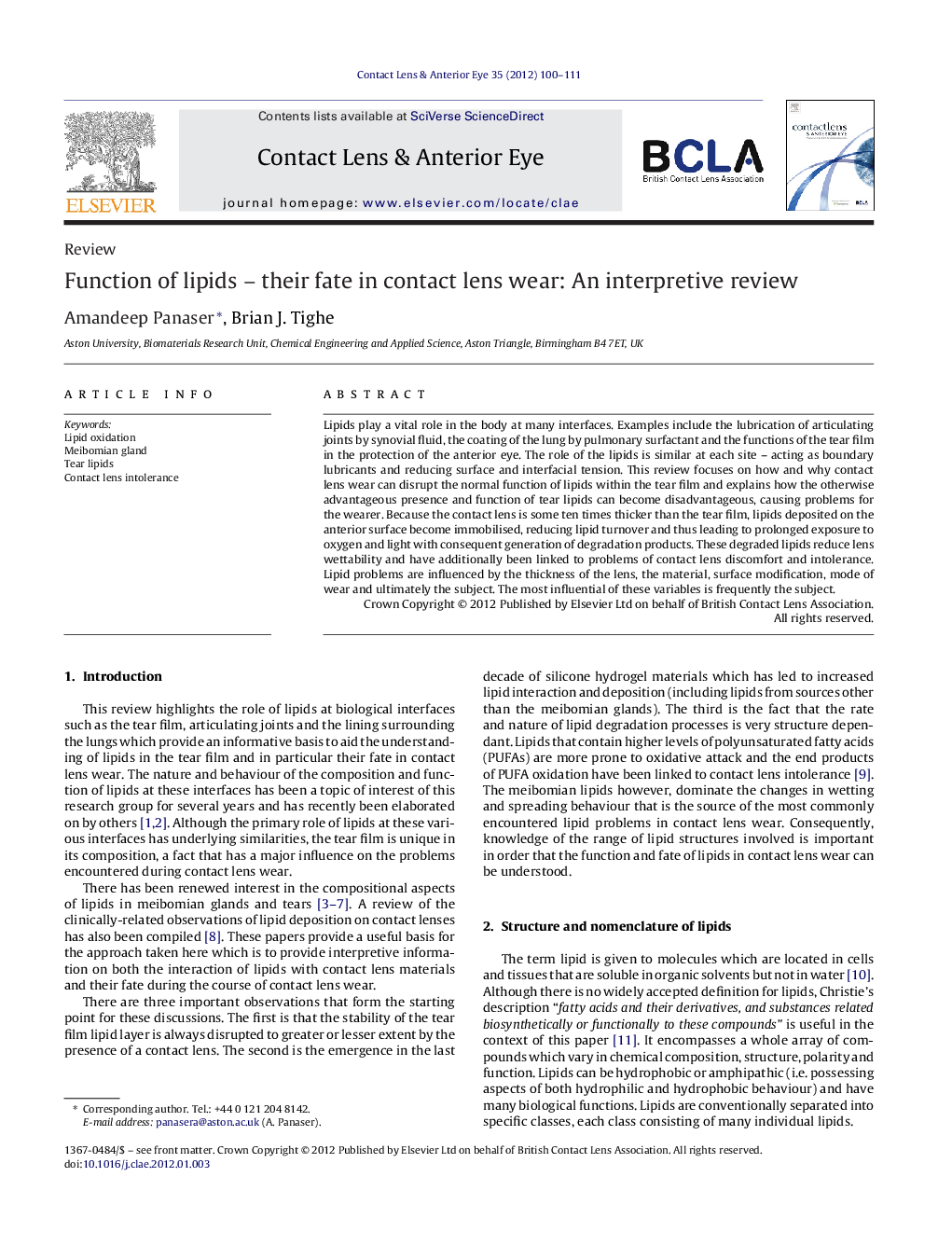| Article ID | Journal | Published Year | Pages | File Type |
|---|---|---|---|---|
| 2693209 | Contact Lens and Anterior Eye | 2012 | 12 Pages |
Lipids play a vital role in the body at many interfaces. Examples include the lubrication of articulating joints by synovial fluid, the coating of the lung by pulmonary surfactant and the functions of the tear film in the protection of the anterior eye. The role of the lipids is similar at each site – acting as boundary lubricants and reducing surface and interfacial tension. This review focuses on how and why contact lens wear can disrupt the normal function of lipids within the tear film and explains how the otherwise advantageous presence and function of tear lipids can become disadvantageous, causing problems for the wearer. Because the contact lens is some ten times thicker than the tear film, lipids deposited on the anterior surface become immobilised, reducing lipid turnover and thus leading to prolonged exposure to oxygen and light with consequent generation of degradation products. These degraded lipids reduce lens wettability and have additionally been linked to problems of contact lens discomfort and intolerance. Lipid problems are influenced by the thickness of the lens, the material, surface modification, mode of wear and ultimately the subject. The most influential of these variables is frequently the subject.
